
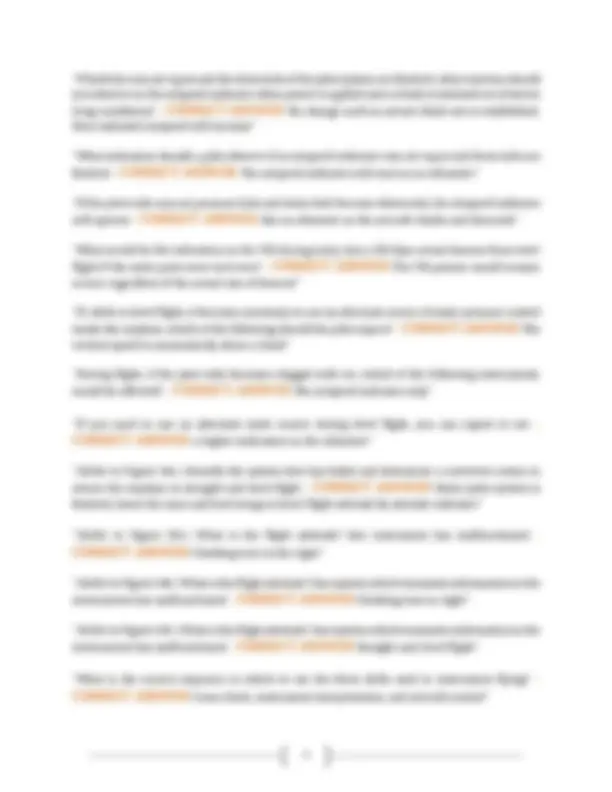
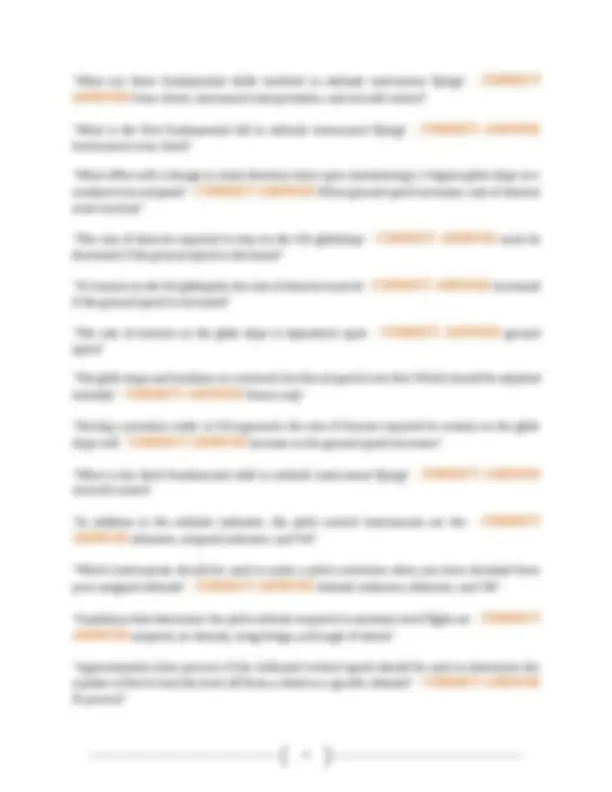
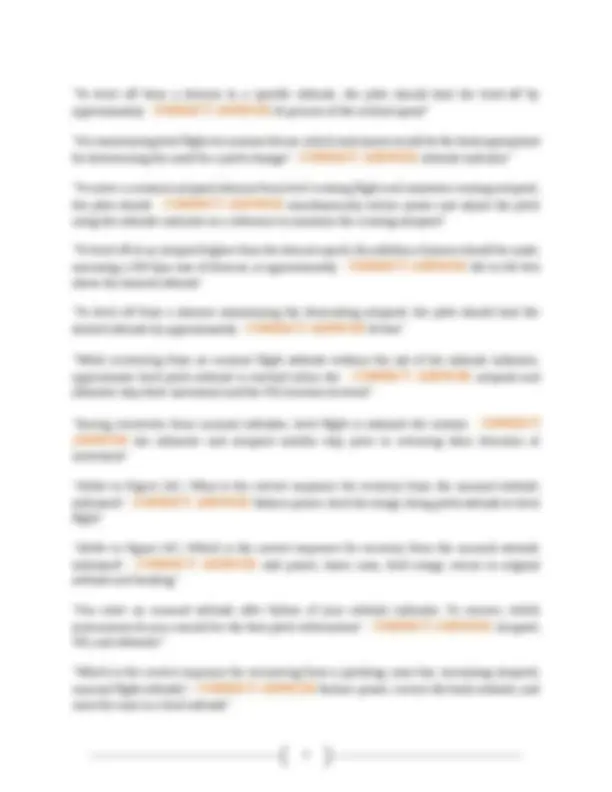
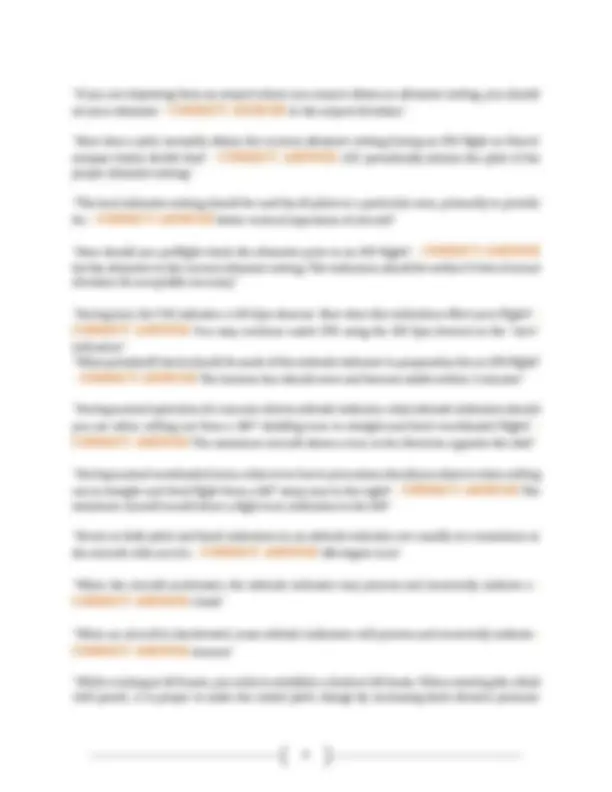
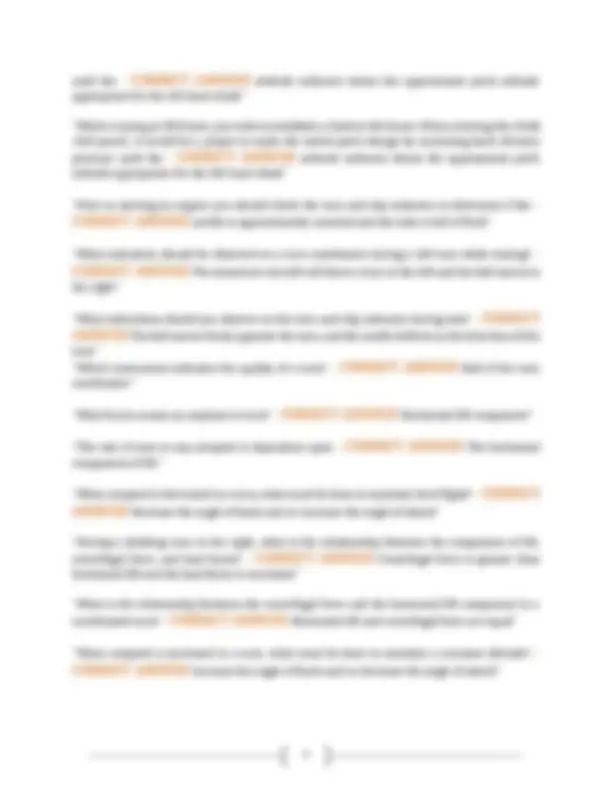
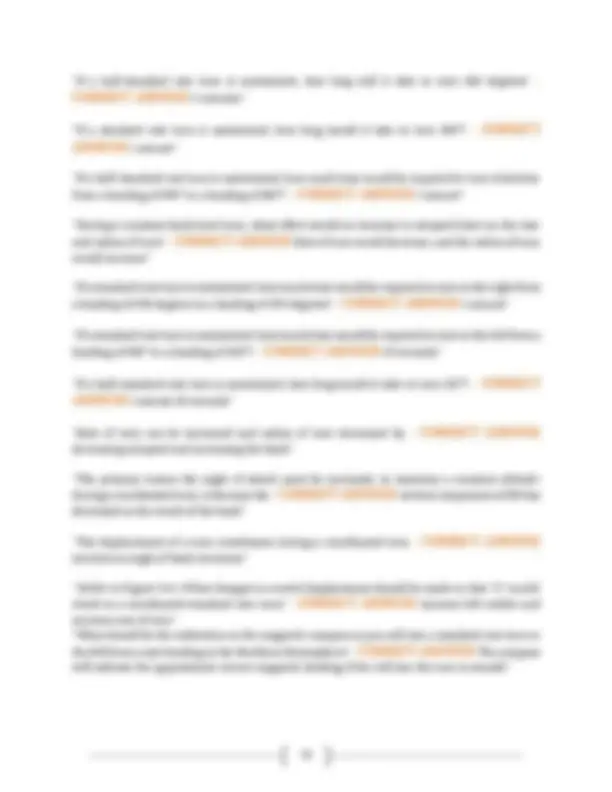


Study with the several resources on Docsity

Earn points by helping other students or get them with a premium plan


Prepare for your exams
Study with the several resources on Docsity

Earn points to download
Earn points by helping other students or get them with a premium plan
Community
Ask the community for help and clear up your study doubts
Discover the best universities in your country according to Docsity users
Free resources
Download our free guides on studying techniques, anxiety management strategies, and thesis advice from Docsity tutors
ASA INSTRUMENT TEST PREP CHAPTER 3 - FLIGHT INSTRUMENTS QUESTIONS WITH COMPLETE SOLUTIONS
Typology: Exams
1 / 11

This page cannot be seen from the preview
Don't miss anything!







When standard atmospheric conditions exist" "Which condition would cause the altimeter to indicate a lower altitude than actually flown (true
"Under what condition will true altitude be lower than indicated altitude with an altimeter
"Altimeter setting is the value to which the scale of the pressure altimeter is set so the altimeter
altimeter to 29.92" Hg"
"If a 180° steep turn is made to the right and the aircraft is rolled out to straight-and-level flight
turn"
to the left"
"(Refer to Figure 144.) What changes in control displacement should be made so that "1" would
increase rate of turn"
"What pretakeoff check should be made of a vacuum-driven heading indicator in preparation for
heading of the aircraft and check for proper alignment after taxi turns"
known headings."
"If both the ram air input and drain hole of the pitot system become blocked, what airspeed
climb"
Instrument cross-check" "What effect will a change in wind direction have upon maintaining a 3 degree glide slope at a
must increase"
decreased if the ground speed is decreased"
if the ground speed is increased"
speed" "The glide slope and localizer are centered, but the airspeed is too fast. Which should be adjusted
"During a precision radar or ILS approach, the rate of descent required to remain on the glide
Aircraft control"
"Which instruments should be used to make a pitch correction when you have deviated from
"Approximately what percent of the indicated vertical speed should be used to determine the
10 percent"
"To level off from a descent to a specific altitude, the pilot should lead the level-off by
"For maintaining level flight at constant thrust, which instrument would be the least appropriate
"To enter a constant-airspeed descent from level cruising flight and maintain cruising airspeed,
using the attitude indicator as a reference to maintain the cruising airspeed" "To level off at an airspeed higher than the descent speed, the addition of power should be made,
above the desired altitude" "To level off from a descent maintaining the descending airspeed, the pilot should lead the
"While recovering from an unusual flight attitude without the aid of the attitude indicator,
altimeter stop their movement and the VSI reverses its trend"
movement" "(Refer to Figure 145.) What is the correct sequence for recovery from the unusual attitude
flight" "(Refer to Figure 147.) Which is the correct sequence for recovery from the unusual attitude
attitude and heading" "You enter an unusual attitude after failure of your attitude indicator. To recover, which
VSI, and altimeter" "Which is the correct sequence for recovering from a spiraling, nose-low, increasing airspeed,
raise the nose to a level attitude"
Pressure" "At an altitude of 6,500 feet MSL, the current altimeter setting is 30.42 "Hg. The pressure altitude
"The pressure altitude at a given location is indicated on the altimeter after the altimeter is set to
"If the outside air temperature increases during a flight at constant power and at a constant
increase" "Altimeter setting is the value to which the barometric pressure scale of the altimeter is set so the
"Pressure altitude is the altitude read on your altimeter when the instrument is adjusted to
"When an altimeter is changed from 30.11" Hg to 29.96" Hg, in which direction will the indicated
lower" "En route at FL290, the altimeter is set correctly, but not reset to the local altimeter setting of 30.57" Hg during descent. If the field elevation is 650 feet and the altimeter is functioning
"En route at FL290, the altimeter is set correctly, but not reset to the local altimeter setting of 30.26" Hg during descent. If the field elevation is 134 feet and the altimeter is functioning
below MSL"
"What is the procedure for setting the altimeter when assigned an IFR altitude of 18,000 feet or
reported setting for climb-out and 29.92" Hg upon reaching 18,000 feet" "While you are flying at FL250, you hear ATC give an altimeter setting of 28.92" Hg in your area. At
"If you are departing from an airport where you cannot obtain an altimeter setting, you should
"How does a pilot normally obtain the current altimeter setting during an IFR flight in Class E
proper altimeter setting" "The local altimeter setting should be used by all pilots in a particular area, primarily to provide
Set the altimeter to the current altimeter setting. The indication should be within 75 feet of actual elevation for acceptable accuracy"
indication" "What pretakeoff check should be made of the attitude indicator in preparation for an IFR flight?
"During normal operation of a vacuum-driven attitude indicator, what attitude indication should
"During normal coordinated turns, what error due to precession should you observe when rolling
miniature aircraft would show a slight turn indication to the left" "Errors in both pitch and bank indication on an attitude indicator are usually at a maximum as
"While cruising at 160 knots, you wish to establish a climb at 130 knots. When entering the climb (full panel), it is proper to make the initial pitch change by increasing back elevator pressure
"If a half-standard rate turn is maintained, how much time would be required to turn clockwise
"During a constant-bank level turn, what effect would an increase in airspeed have on the rate
would increase" "If a standard rate turn is maintained, how much time would be required to turn to the right from
"If a standard rate turn is maintained, how much time would be required to turn to the left from a
decreasing airspeed and increasing the bank" "The primary reason the angle of attack must be increased, to maintain a constant altitude
decreased as the result of the bank"
increase as angle of bank increases" "(Refer to Figure 144.) What changes in control displacement should be made so that "2" would
increase rate of turn" "What should be the indication on the magnetic compass as you roll into a standard rate turn to
will indicate the approximate correct magnetic heading if the roll into the turn is smooth"
"What should be the indication on the magnetic compass as you roll into a standard rate turn to
compass will indicate the approximate correct magnetic heading if the roll into the turn is smooth" "What should be the indication on the magnetic compass as you roll into a standard rate turn to
compass will indicate a turn to the right, but at a faster rate than is actually occurring" "On what headings will the magnetic compass read most accurately during a level 360 degree
degrees"
magnetic dip characteristic" "What should be the indication on the magnetic compass as you roll into a standard rate turn to
compass will indicate a turn to the left, but at a faster rate than is actually occurring" "What should be the indication on the magnetic compass as you roll into a standard rate turn to
compass will indicate the approximate correct magnetic heading if the roll into the turn is smooth" "What should be the indication of the magnetic compass as you roll into a standard rate turn to
compass will initially indicate a turn to the left" "What should be the indication on the magnetic compass as you roll into a standard rate turn to
compass will indicate the approximate the correct magnetic heading if the roll into the turn is smooth" "What should be the indication on the magnetic compass as you roll into a standard rate turn to
compass will initially indicate a turn to the right"